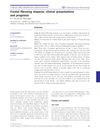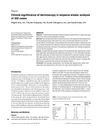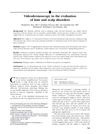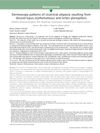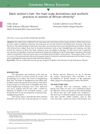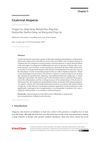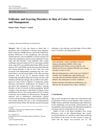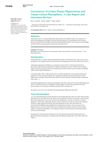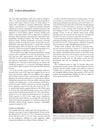Frontal Fibrosing Alopecia: Dermoscopic Features
March 2012
in “
Actas dermo-sifiliográficas/Actas dermo-sifiliográficas
”
TLDR Dermoscopy helps diagnose frontal fibrosing alopecia by identifying specific scalp features.
Frontal fibrosing alopecia (FFA) is a type of cicatricial alopecia characterized by progressive and symmetrical recession of the frontotemporal hairline, often accompanied by partial eyebrow alopecia and variable body hair loss. It is more common in postmenopausal women but can also affect men and premenopausal women. Dermoscopic features of FFA include reduced follicular ostia, erythema, perifollicular desquamation, and blue-gray dots, which help differentiate it from other types of alopecia. Histopathology typically shows reduced hair follicle density, perifollicular lymphocytic infiltrate, and fibrosis. The case of a 51-year-old woman with FFA highlighted the diagnostic value of dermoscopy in identifying these features and ruling out other causes of alopecia.
